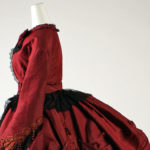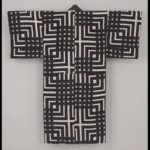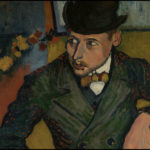robe volante
A dress originating in 18th-century France which was pleated at the shoulder and hung loose down, worn over hoops.
Read MoreA dress originating in 18th-century France which was pleated at the shoulder and hung loose down, worn over hoops.
Read MoreIn 1520-1529, men and women both began to wear shirts with high standing collars ending in a frill at the neck and cuff, which would later evolve into the ruff. Dark colors continued to grow in popularity, as did everything oversize, among them: codpieces, gown sleeves, and elaborate headdresses.
Read MoreThe second decade of the 16th century featured broad-shouldered silhouettes for men and women, paired with immense sleeves (except for women in Germany, who retained narrow sleeves). Slashing, pinking, paning and other decorative fabric treatments like blackwork embroidery were increasingly common.
Read MoreJean-Marc Nattier, an acclaimed 18th-century portraitist, was known for his mythological style, painting women in imagined costume that was only loosely based on fashionable trends, as is true in his 1750/60 Portrait of a Woman.
Read MoreVionnet’s exquisite technique and ingenious construction–like that seen in her 1936 carnival dress–popularized her designs internationally throughout the 1920s and 1930s.
Read MoreFashion in the 1950s saw a clear gender divide. While men and boy’s fashion moved towards a more casual day-to-day style, women and girl’s fashion prioritized elegance, formality, and perfectly matched accessories. Couture womenswear saw rapid change with new designers such as Cristobal Balenciaga and Hubert de Givenchy disrupting the overtly feminine silhouette popularized by Christian Dior while novel prints and colors marked a playfulness in fashion for both men and women.
Read More The Fez and the Ottoman Path to Modernity
The Fez and the Ottoman Path to Modernity 1869 – Red Silk Dress
1869 – Red Silk Dress katazome (stencil printing)
katazome (stencil printing) 1905 – André Derain, Lucien Gilbert
1905 – André Derain, Lucien Gilbert